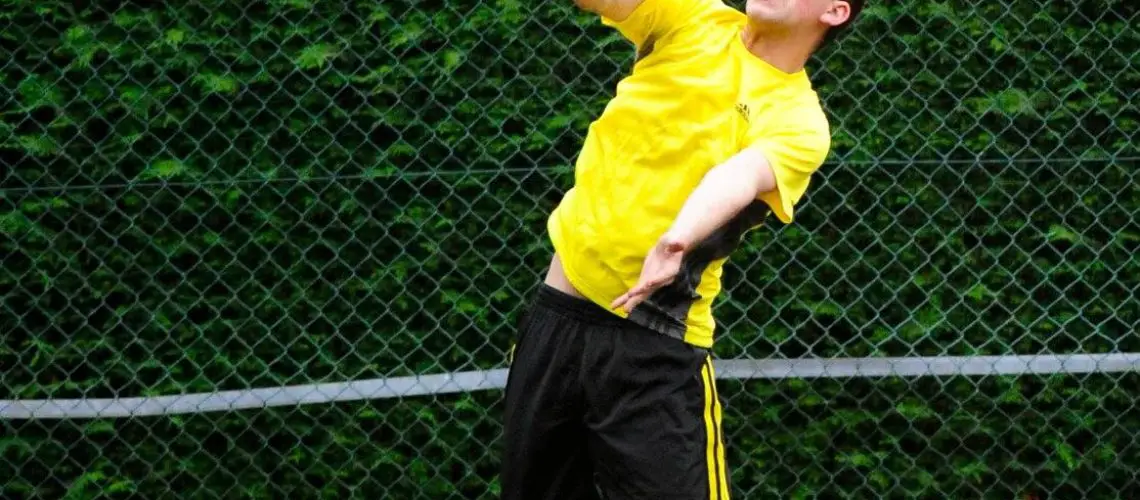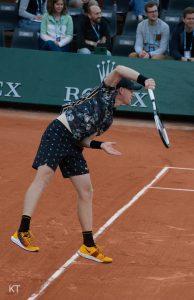We may earn money or products from the companies mentioned in this post.
Introduction

Tennis, a sport loved by millions around the world, is characterized by its fast-paced action and strategic gameplay While players’ skills and techniques are crucial, another essential component of the sport is often overlooked – the tennis ball In this article, we will delve into the intriguing history of tennis balls and explore their significance in enhancing player performance
Brief History of Tennis Balls
The origins of tennis balls can be traced back centuries ago when the sport was played in various forms across different cultures Early versions of the game involved hitting a ball using bare hands or simple improvised tools It wasn’t until later that specific materials were used to create more standardized tennis balls
1 Early Origins and Materials Used:
In ancient times, people used various materials like animal bladders, cloth-wrapped rocks, and even human hair-stuffed balls as makeshift tennis balls These primitive versions lacked consistency in shape and bounce but provided a basic means for playing the game
2 Evolution of the Modern Tennis Ball:
The modern-day tennis ball as we know it has gone through significant advancements in both design and manufacturing processes The transition from natural materials to synthetic ones revolutionized their performance on the court
Importance of Tennis Balls in the Sport
Tennis balls play a vital role in ensuring fair gameplay and enhancing overall performance for both professional players and recreational enthusiasts alike
1 Performance and Quality:
The quality of a tennis ball directly impacts its performance during matches Factors such as durability, felt density, pressure retention, and rebound characteristics all contribute to how well a ball performs on different surfaces
2 Impact on Player Performance:
Tennis balls affect player performance in several ways The bounce and speed of the ball directly influence shot selection, footwork, and overall strategy Additionally, players rely on the consistency and predictability of a ball’s flight path to execute precise shots with accuracy
Overall, tennis balls are more than just spherical objects used in a game; they are essential tools that enable the sport to be played at its highest level Understanding their history and significance can deepen our appreciation for the intricacies involved in this beloved sport
Tennis Ball Production Process

Have you ever wondered how those small, fuzzy spheres we call tennis balls are made? It’s a fascinating process that involves various materials and intricate manufacturing steps Let’s dive into the world of tennis ball production and uncover the secrets behind their creation
Materials used in manufacturing tennis balls
When it comes to crafting a tennis ball, two key materials take center stage: rubber cores and felt covers These components play a crucial role in determining the performance and characteristics of the final product
-
Rubber cores and vulcanization process:
The heart of every tennis ball lies within its rubber core This core is created by mixing different types of rubber, including natural and synthetic varieties, along with filler materials and curing agents Once mixed, the rubber is molded into half-shell shapes before undergoing a process called vulcanization Vulcanization involves subjecting the rubber to heat, causing it to cure and acquire its signature bounce properties -
Felt composition and its impact on performance:
The outer layer of a tennis ball consists of felt, which significantly influences its performance on the court Felt is typically made from woven cloth sheets that are cut into precise pieces for each individual ball The composition of the felt can vary, affecting factors such as durability, grip, and playability
Manufacturing steps involved in making a tennis ball
Now that we understand the materials involved let’s explore the step-by-step process that transforms these raw ingredients into a finished tennis ball ready for action
-
Creating the rubber core:
The first step in production involves crafting the rubber core by following several sub-steps:- Mixing rubber components: Various rubber types, filler materials, and curing agents are combined to form the core’s base mixture
- Molding: The rubber mixture is shaped into half-shell forms, providing the foundation for the tennis ball’s structure
- Vulcanizing: The molded core undergoes a heat treatment process known as vulcanization This step enables the rubber to cure fully, resulting in its characteristic bounce and resilience
- Grinding: To ensure uniformity in size and shape, the vulcanized core undergoes a grinding process that smoothes out any imperfections
-
Applying the felt cover:
Once the rubber core is ready, it’s time to add the outer layer of felt This step involves:- Cutting felt pieces from cloth sheets: Precise shapes are cut from woven cloth sheets to create individual felt covers for each tennis ball
- Gluing/adhering felt to core halves: Using specialized adhesives or glues, the cut felt pieces are carefully attached to both halves of the rubber core, ensuring a secure bond between layers
- Final press for seam bonding: In order to strengthen and seal the seams between the two halves of the tennis ball, a final press is applied This ensures that all components are securely bonded together before moving on to packaging and distribution
And there you have it! The fascinating journey from raw materials to a perfectly crafted tennis ball ready for an exhilarating match on the court Now, next time you pick up a tennis ball, you can appreciate all the intricate steps involved in its creation
Major Manufacturers of Tennis Balls Worldwide

Tennis, a globally loved sport, relies on high-quality tennis balls to ensure optimal performance and enjoyment for players In this article, we will explore the key players in the tennis ball manufacturing industry and their respective locations around the world
Key Players in the Market
The tennis ball market is dominated by several major manufacturers who have established themselves as leaders in producing top-notch tennis balls:
-
Wilson Sporting Goods Co
: Based in the USA, Wilson is a powerhouse in the industry, accounting for over half of the global supply of tennis balls Their commitment to quality and innovation has solidified their position as a trusted brand among players worldwide -
Penn (Head)
: Renowned for producing high-quality balls tailored specifically for professional players, Penn (Head) has earned a reputation for excellence Their dedication to meeting the rigorous demands of elite athletes has made them a preferred choice on professional circuits -
Dunlop Sports Ltd
: With its roots in the UK, Dunlop Sports Ltd boasts an international reach Known for their durable and consistent performance, Dunlop tennis balls are favored by players at all levels of the game -
Babolat
: Hailing from France, Babolat brings a rich history in tennis to their manufacturing expertise Known for their innovative technologies and commitment to player satisfaction, Babolat continues to make significant contributions to the world of tennis ball production
Location of Factories Around the World
To meet global demand, these major manufacturers have strategically placed their factories across different regions:
-
North America
– Wilson Sporting Goods Co operates a state-of-the-art factory in Thailand, ensuring efficient production and distribution to meet the needs of tennis enthusiasts worldwide -
Europe
– Dunlop Sports Ltd manufactures their tennis balls in England, while Babolat proudly produces theirs in France These locations allow for streamlined operations and easy access to markets across Europe -
Asia-Pacific
– Penn (Head) has established its factory in China, catering to the growing demand for tennis balls in this region This strategic placement enables them to efficiently serve markets across Asia-Pacific
The global influence of these major manufacturers ensures that players around the world have access to high-quality tennis balls that enhance their playing experience and contribute to the growth of the sport
Conclusion:

As the world becomes more conscious of environmental issues, the tennis industry has taken steps to address sustainability concerns Two notable initiatives include recycling programs and the use of eco-friendly materials
1 Recycling programs: Rebounces and Tennis Ball Project
Rebounces and Tennis Ball Project are organizations dedicated to recycling tennis balls They collect used balls from tennis clubs, tournaments, and individuals, preventing them from ending up in landfills These recycled balls are then rejuvenated through a specialized process that restores their bounce and performance By extending the lifespan of tennis balls, these programs reduce waste and promote a more sustainable approach to the sport
2 Eco-friendly materials: Tretorn Micro X balls
Tretorn Micro X balls are an excellent example of eco-friendly materials being used in tennis ball manufacturing Made with a core composed of microcellular rubber, these balls provide exceptional durability while minimizing their impact on the environment The innovative design allows for a longer lifespan compared to traditional tennis balls, reducing the need for frequent replacements and further decreasing waste
Future innovations in tennis ball manufacturing
The future holds exciting possibilities for advancements in tennis ball manufacturing
-
Advances in material science & technology:
With ongoing developments in material science and technology, manufacturers can explore new materials that offer enhanced performance while maintaining sustainability standards This could lead to even more durable and eco-friendly options for tennis players -
Potential for customization & personalization:
As technology continues to advance, there is potential for personalized tennis balls tailored to individual preferences Customized features such as specific bounce characteristics or player-specific designs could revolutionize the way players interact with their equipment
In conclusion, the tennis industry is actively addressing environmental concerns through recycling programs and the use of eco-friendly materials The future of tennis ball manufacturing looks promising with potential advancements in material science and technology, as well as the possibility of customization and personalization
Useful Links

Lawn-tennis balls exports by country |2019
Definition, Examples, and Common Questions About The Ball
The history of tennis balls
The History of Tennis Balls
Tennis Balls
What Are Tennis Balls Made Out Of?
Frequently asked questions
The Chemistry of a Tennis Ball
How tennis balls are made: inside Wilson’s tennis-ball factory
Price of Bath | Fred Perry UK
Price of Bath
Why Are Tennis Balls Fuzzy – What Is a Tennis Ball Made Of
Wimbledon’s tennis balls are made 6000 miles away in the …
Are Tennis Ball Felt Made Out Of
The Best Tennis Balls for 2023
The 7 Best Tennis Balls: Reviews & Buyer’s Guide
History of the Tennis Ball
Tennis ball






